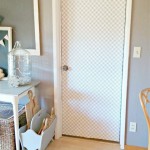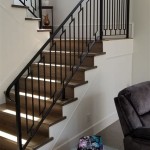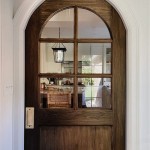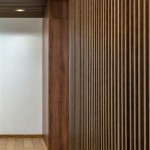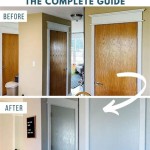Transforming Interior Cinder Block Walls: A Comprehensive Guide
Cinder block walls, while structurally sound and cost-effective, often present an aesthetic challenge in interior spaces. Their unfinished appearance can feel cold and industrial. Fortunately, numerous techniques exist to transform these walls into attractive and functional elements of any room. This guide explores various methods for covering interior cinder block walls, enhancing both their visual appeal and overall comfort.
Applying Drywall
Drywall offers a classic, versatile solution for covering cinder block walls. It provides a smooth, even surface suitable for various finishes like paint, wallpaper, or tile.
Key considerations for drywall application include:
- Furring strips: These create an air gap between the cinder block and drywall, allowing for insulation and preventing moisture issues.
- Moisture-resistant drywall: In damp areas like basements, moisture-resistant drywall is crucial to prevent mold and mildew growth.
- Taping and joint compound: Properly applied tape and joint compound create seamless transitions between drywall sheets.
- Priming: Before painting or wallpapering, a primer seals the drywall and ensures even color distribution.
Utilizing Plaster
Plaster provides a more traditional, textured finish compared to drywall. Directly applying plaster to cinder blocks requires careful surface preparation.
Effective plaster application involves:
- Cleaning: Thoroughly clean the cinder blocks to remove dust, debris, and efflorescence.
- Applying a bonding agent: This promotes adhesion between the plaster and the cinder block surface.
- Scratch coat: The first layer of plaster, the scratch coat, provides a key for subsequent layers.
- Brown coat: The brown coat builds up the plaster thickness and creates a level surface.
- Finish coat: The final layer, the finish coat, provides the desired texture and appearance.
Paneling Options
Various paneling materials offer quick and relatively easy coverage for cinder block walls. These range from wood paneling for a warm, rustic aesthetic to PVC panels for a moisture-resistant solution in bathrooms or laundry rooms.
Considerations for paneling installation include:
- Adhesive: Construction adhesive can secure panels directly to the cinder blocks.
- Furring strips: Provide a level surface and allow for insulation behind the panels.
- Finishing touches: Trim pieces create a polished, finished look around windows, doors, and corners.
Exploring Decorative Concrete Finishes
Concrete finishes can transform the raw appearance of cinder blocks into a modern and visually appealing surface. These techniques range from simple paint applications to more complex textured finishes.
Methods for enhancing concrete surfaces include:
- Concrete paint: Specifically formulated for masonry surfaces, concrete paint provides a durable and protective finish.
- Concrete stain: Penetrates the surface, creating a more natural, variegated look.
- Textured coatings: These coatings can mimic the appearance of stucco, stone, or other materials.
Installing Tile
Tile provides a durable, water-resistant, and aesthetically versatile option for covering cinder block walls. From ceramic and porcelain to natural stone, a wide variety of tile options exist to suit different styles and budgets.
Successful tile installation requires:
- Surface preparation: A clean, level surface is essential for proper tile adhesion.
- Thin-set mortar: This specialized mortar bonds the tile to the cinder block surface.
- Grout: Fills the spaces between tiles and provides a sealed, finished appearance.
- Sealant: Sealing grout lines protects against moisture and staining.
Using Fabric Coverings
Fabric coverings provide a softer, more tactile approach to concealing cinder block walls. This method offers a cost-effective and easily customizable solution, particularly for temporary applications.
Fabric installation methods include:
- Adhesive: Spray adhesive or fabric glue can secure fabric directly to the cinder blocks.
- Staples: Stapling fabric to furring strips provides a more secure and easily removable option.
- Drapery tracks: Hanging fabric from drapery tracks creates a more finished, curtain-like appearance.
Creating a Vertical Garden
For a unique and eco-friendly approach, consider creating a vertical garden on the cinder block wall. This method not only conceals the wall but also introduces a natural, living element into the space.
Vertical garden installation entails:
- Installing a framework: A framework or trellis system supports the plants and growing medium.
- Selecting appropriate plants: Choose plants that thrive in the specific light and humidity conditions of the space.
- Implementing an irrigation system: A drip irrigation system ensures consistent watering.

How To Beautifully Transform Your Cinder Block Wall

Cinder Block Wall Transformation Nooks In Bloom

10 Ways To Cover Concrete Walls In A Basement Finish

Cinder Block Wall Transformation Nooks In Bloom

Stylish Solutions Covering Unfinished Basement Walls Csg Renovation

What Is The Best Way To Dress Up A Cinder Block Wall In Classy Quora
Drywall Skim Coat Over Omni Block Omniblock

Cinder Block Wall Transformation Nooks In Bloom
.jpg?strip=all)
Before After Painted Cinderblock Walls Dream Green Diy

Covering Up A Glass Block Wall Hometalk
Related Posts


